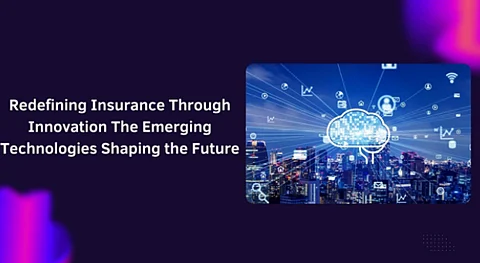

In the modern digital era, the insurance industry is undergoing a profound transformation, leveraging cutting-edge technologies to enhance efficiency, security, and customer experiences. Girish Poojar, an expert in insurance technology solutions, explores how artificial intelligence, blockchain, robotic process automation, and IoT are reshaping the sector. His insights highlight the strategic impact of these innovations in streamlining operations and redefining risk management.
AI and ML have transformed risk assessment and underwriting by analyzing vast historical and real-time data. These technologies enhance predictive modeling, improving risk profiling accuracy. AI-driven underwriting reduces loss ratios by 15% and enhances pricing precision, enabling personalized coverage while minimizing high-risk exposure. Automated data extraction from IoT devices and external sources accelerates application processing by 40%, streamlining operations and improving efficiency for insurers.
Claims processing, traditionally a time-consuming task, is now being optimized through AI and automation. AI-powered damage assessment tools, using computer vision, have significantly reduced claim approval times, with 30% of auto claims now being processed automatically. Natural Language Processing (NLP) further enhances fraud detection, identifying suspicious claims with 60% greater accuracy than rule-based systems. These AI-driven enhancements have resulted in a 25% reduction in handling costs and a 40% decrease in processing time, significantly improving customer satisfaction.
Blockchain technology is transforming insurance by introducing smart contracts, which automate claims processing and ensure transparency. Smart contracts reduce administrative costs by 25% and accelerate settlements by 30-40%. The immutable nature of blockchain strengthens fraud prevention by creating tamper-proof audit trails. Additionally, blockchain-based identity verification reduces onboarding times by 51% and lowers identity fraud incidents by 65%. These capabilities not only enhance security but also streamline regulatory compliance and operational efficiency.
Robotic Process Automation (RPA) streamlines back-office operations by automating routine tasks such as data entry, premium collection, and reconciliation. Insurers experience 40-60% faster processing, 20-30% cost savings, and improved accuracy. With minimal human intervention, RPA delivers a 250% ROI in one year, allowing employees to focus on strategic decision-making.
Process mining technology identifies inefficiencies in insurance workflows, enabling insurers to optimize operations dynamically. Organizations using process mining have discovered inefficiencies in 22-30% of workflows, leading to an average 20% improvement in processing efficiency. Claims processing times have been reduced by up to 25%, while first-contact resolution rates have improved by 12-19%. By analyzing real-time operational data, insurers can continuously refine their processes to enhance productivity and reduce costs.
AI-powered document processing is transforming the way insurers handle unstructured data. Optical Character Recognition (OCR) and Natural Language Understanding (NLU) have improved data extraction accuracy from insurance forms to 92%, reducing manual data entry errors. Automated document processing has led to a 55% reduction in handling times and a 70-75% improvement in data extraction precision. These advancements enable faster claims approvals and policy issuance, directly improving customer satisfaction.
The integration of the Internet of Things (IoT) in insurance has enabled real-time risk monitoring and proactive loss prevention. Connected vehicle telematics have reduced accident frequencies by 30%, while smart home devices have lowered claims related to water damage by 93%. The adoption of IoT-driven risk mitigation strategies has led to premium reductions of 10-15% for policyholders. Additionally, insurers leveraging IoT data for predictive analytics have improved underwriting accuracy and claims validation processes.
With edge computing, insurance is improving: the IS accomplishes data rather closer to the source generated from the IoT. By doing so, latency is cut down, the response times are better by approximately 60%, and there is a decrease of approximately 35% in cloud processing costs. Underwriters would be real-time underwriting decision-makers, while claims could be quickly responded to by insurers using edge computing, and dynamic policy prices could be offered as per real-time behavioral data. Edge computing will help tremendously in the optimization of data flows and decisions when the data from the IoT increases.
The third-party integration through APIs of insurance platforms can cut time-to-market by 30-35% and add 25% towards underwriting accuracy. External data brings better risk assessment and claims verification into paving the way for an industry that moves from silos to connected digital ecosystems; hence, an additional 83% becomes embedded into APIs.
Thus, the convergence of the 'AI-Blockchain-RPA-IoT-Edge' changes the dynamics of insurance operations and revolutionizes the insurance sector by adding efficiency, security, and innovation with customers in focus. As these advanced technologies are being adopted by insurers, they can gain a competitive advantage through improved risk handling, optimized operations, and enhanced experience with customers. Future research by Girish Poojar is predictive of the integrated hi-tech application toward the future of insurers, running empowered with intelligence, agility, and resilience in a continuously changing world.
